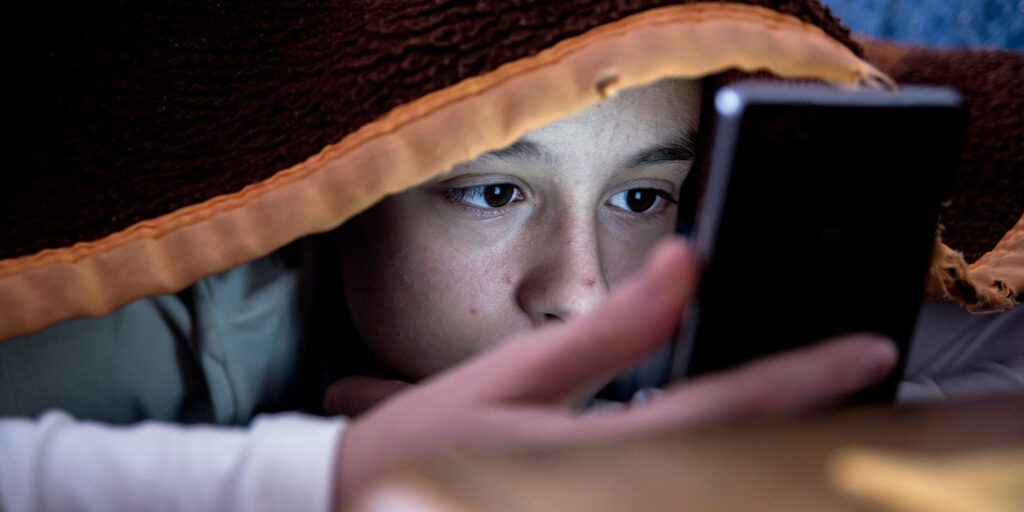
Welcome to our latest blog post, where we’ll be discussing the top 5 social media safety rules that every teen should know and follow. As a young person in today’s digital age, it’s more important than ever to be aware of the potential dangers lurking on social media platforms. From cyberbullying to online predators, there are many risks that come with using these sites and apps – but with a few simple steps, you can protect yourself and your personal information from harm. So if you’re ready to learn how to stay safe while still enjoying all the benefits of social media, read on for our top tips!
Introduction to Social Media Safety
It’s no secret that social media has taken over the lives of teenagers. It’s a great way to stay connected with friends, share interests, and express yourself. But it’s important to remember that social media is a public platform – which means your posts can be seen by anyone, including strangers.
That’s why it’s so important to practice social media safety, especially if you’re a teenager. Here are some of the top social media safety rules for teens:
Rule #1: Think Before You Post
It’s easy to get caught up in the excitement of posting on social media, but it’s important to take a step back and think before you hit that share button. Once something is out there, it’s very difficult to take it back. So, before you post that photo or status update, ask yourself if it’s something you really want to share with the world.
Think about how the photo or update might be perceived by others. Is there anything in it that could be interpreted the wrong way? If so, consider whether or not you’re comfortable with that before you post.
Also, keep in mind that once something is posted online, it’s there for everyone to see – including your parents, teachers, and potential employers. So think about whether or not you’re comfortable with them seeing it before you hit share.
Rule #2: Know Who You’re Talking To
Talking to strangers online can be dangerous. You never know who you’re really talking to. They could be lying about who they are, their age, or anything else. It’s important to only talk to people you know and trust online. If you don’t know the person, don’t add them as a friend and don’t give them any personal information.
Rule #3: Keep Your Private Information Private
It’s important to remember that anything you post online is public information. That means that you should never post any private information about yourself, such as your address, phone number, or credit card number. Even if you think your account is private, there’s always the chance that someone else will be able to see it. So it’s best to err on the side of caution and keep your private information to yourself.
Rule #4: Don’t Share Your Location
When it comes to social media, it’s important to be aware of the safety risks. One of the most important safety rules for teens is to never share their location. This rule applies to both online and offline locations.
There are a few reasons why sharing your location can be dangerous. First, if you share your home address, school address, or any other offline location, you could be putting yourself at risk of being targeted by criminals. Second, if you share your online location (such as your IP address), you could be targeted by cybercriminals. And finally, if you share your real-time location (such as through a live-streaming app), you could be putting yourself at risk of being tracked by someone with malicious intent.
So how can you protect yourself? The best way is to simply not share your location, either online or offline. If you do need to share your offline location with someone (such as when meeting up with a friend), make sure to do so privately and in a safe place. And if you’re sharing your location online, make sure to use a VPN or other privacy tool to hide your IP address.
Rule #5: Be Aware of Scams and Spam
There are a lot of scams and spam out there, so it’s important to be aware of them. There are a few things to look out for:
-If something sounds too good to be true, it probably is.
-Be careful about giving out personal information like your address or phone number.
-Never click on links from people you don’t know.
-If you’re ever in doubt, ask a parent or other trusted adult for help.
Social media can be a great way for teens to stay connected, but it’s important to remember that there are risks associated with using these platforms. Following the top 5 social media safety rules for teens outlined in this article will help keep you safe and secure when using social media. Remember: stay aware of who you’re talking to online, never share personal information, think twice before posting anything online, report potential abuse or harmful content immediately and always use privacy settings where available. With the right precautions in place, you can safely enjoy your favorite social media sites!
© Copyright 2004-2024 Parenting Matters | All Rights Reserved
Parenting Matters is a non-profit, 501(c)3 organization, Tax ID #65-0374386, State of Florida Registration number CH9376.
A COPY OF THE OFFICIAL REGISTRATION AND FINANCIAL INFORMATION MAY BE OBTAINED FROM THE DIVISION OF CONSUMER SERVICES BY CALLING 800-HELP-FLA TOLL-FREE WITHIN THE STATE OR VISITING WWW.800HELPFLA.COM . REGISTRATION DOES NOT IMPLY ENDORSEMENT, APPROVAL, OR RECOMMENDATIONS BY THE STATE. EXCHANGE CLUB FAMILY PARTNERSHIP CENTER OF MANATEE COUNTY, INC., DBA PARENTING MATTERS REGISTRATION # CH9376
General Admission Tickets $65
All Attendees Must Be 21 Years or Older